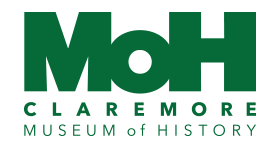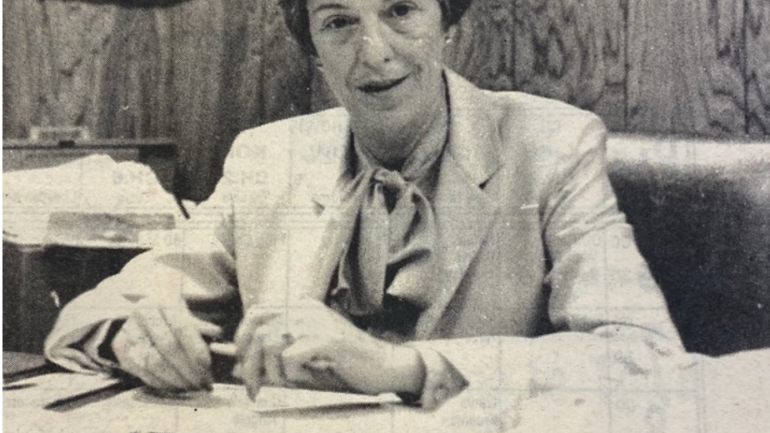This story appeared in the August 26, 2006 Claremore Progress by Larry Larkin.
“Lantow Field, Home of the Claremore Zebras.” These are the words on the metal sign at the entrance of the high school football stadium. Listen to the sounds of the gentle winds that blow across the field and much more will be revealed, however. Located on the northern edge of the city, Lantow Field has stood its ground for 46 years. When opened in 1960, the structure was the lone sentry at the North Sioux Street location.
During the past five decades, much has been added. An elementary school, a high school, a junior high, a track facility, a softball field, and various other buildings now form a semicircle around the stadium. Homes and two churches also dot the area.
Still, even now outdated by some standards, Lantow Field holds a proud place in Claremore’s history. It was constructed at a cost of $125,000. The Zebras must have liked their new home. They won the first nine games that season as they rose to a No. 3 state ranking. This was not the first Lantow Field, however.
Starting in 1932, Claremore’s home games were played at Claremont Elementary School at Eighth Street between Choctaw and Wewoka. The present school building occupies the area where the games took place. The school at that time was located farther to the north. Fans could watch games from their cars. Lights were installed in 1941, but permanent stands were not added until the summer of 1945. The stands were built by Murl Cline, the Zebras’ head football coach. A name change also came in 1945.
Many former Zebra players answered their country’s call to service during World War II. Two, Norman and Robert Lantow, did not return. The sons of Ollie and H.D. Lantow, they were paratroopers who lost their lives during the invasions of Normandy and Holland. To honor this family, it was decided to change the name Claremont Field to Lantow Field.
John Smith, longtime junior high coach and a lifetime Claremore resident, recently said he remembered when the change occurred. “It was just after the end of the war,” he said. “I was a freshman and we were having a Homecoming Quarterback Club alumni meeting. Joe Martin and Ernie Smart stood up and made the motion to change the name.”
The two local businessmen quickly received the full support of city and school officials in the matter. The Zebras would continue to play at the Claremont site for the next 14 years, but the new name was Lantow Field at Claremont.
In September 1959, the school board was eyeing an 80-acre track adjacent to Will Rogers Airport on the city’s north side. Superintendent E.C. Sprague said the school was prepared to pay $15,000 for 15 acres with the purpose of building a football field. To illustrate how times have changed, the stadium was built and ready to open a year later.
Finishing touches came the day before the first game, as goal posts and the scoreboard were installed. According to a newspaper article that day, the scoreboard featured electrical lighting to make statistics easily readable. The concrete stands on the north side had room for 2,300 fans while approximately 500 metal seats were across the field. These were reserved for the pep club and the bands from both schools.
The name Lantow Field also made the move to the new site. For the third year in a row, Claremore opened with Fairfax. It didn’t take long to christen the new field. Marcus Hendricks, the left halfback, scored on the game’s seventh play. Warren Roberts, the right halfback, followed with a two-point conversion run and the Zebras were on their way to a 20-6 victory.
Joining the two running backs in the starting lineup that night on the line were ends Benny Griffith and Richard Streeter, tackles Regan Huckleby and Sammy Hollinger, guards Joe McCollough and David Brown, and center Bruce Cobb. Quarterback Lane Corley and fullback Gary Boudreaux rounded out the offense. Coming in as defensive starters were halfback Jimmy Nelson, linebacker Robert Largent and guard Wayne Bowman.
Here is another difference in time: Claremore’s biggest player was Hollinger at 175 pounds. During the Homecoming game that year, Claremore honored the school’s first football team. In 1907, the local team was unbeaten, untied, unscored upon. They stopped Nowata in the opener and then blanked Chelsea twice during a three-game schedule.
Four members of that team, Dr. Orange Starr, Dave Alton, E.V. “Shorty” Storey, and Paul Fry, attended the 1960 Homecoming ceremonies. Under the direction of head coach Lester “Bear” Jensen and assistants Bill Dost and Bob Henning, the ’60 Zebras would cruise through nine opponents undefeated. Going into the final game, Claremore was ranked No. 3 in the state.
Then in the 10th week, the same week John F. Kennedy was elected president of the United States, the Zebras went to Pawhuska to determine the Verdigris Valley Conference championship. The Huskies, at 8-0-1, defeated Claremore, 38-16. The Zebras had to wait another year before lifting a championship flag. Still, the season-ending loss in ’60 could not spoil the premiere year at the new Lantow Field. Now older than the grandparents of this year’s Zebra players, the venerable stadium still stands tall and proud. Some day, a new stadium will be built. When that day comes, hopefully the people in charge will carry on the name of Lantow Field.



